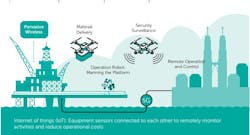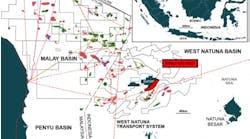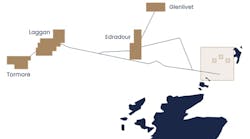Offshore staff
KUALA LUMPUR, Malaysia – Petronas’ Resak platform offshore Kertih, Terengganu, will be Malaysia’s first platform remotely controlled from land, the company revealed in its Activity Outlook 2021-23.
The currently manned facility is undergoing conversion for remote operations via implementation of automation, robotics, and AI measures. It will transition from full board offshore manning to lean manning and eventually to fully unmanned operation.
To aid the process, staff required to operate both offshore and onshore sites are receiving technical ‘upskilling’. Petronas aims to duplicate the transformation process at other platforms, as part of a commitment to bring in remote and autonomous operations throughout its facilities.
The company also listed some of the robotics technologies it has been collaborating on with various developers for integration with its daily operations, toward building Facilities of the Future.
Once these are tested, the company hopes these and other similar technologies will be adopted by vendors when performing tasks at Petronas facilities. Developments include:
- BIKE – Inspection Robot Magnetic legs for crawling and climbing on internal and external surfaces including confined spaces
- ANYmal – Operation Robot Extreme, designed for mobility and advanced sensing to allow autonomous checking, testing, and routine surveillance in unmanned facilities
- Drones for remote inspections in hard-to-reach areas, aerial transfer of materials; and accurate personnel surveillance.
Petronas is intensifying efforts to reduce carbon emissions from its operations. It is currently embarking on its first full carbon capture, utilization and sequestration (CCUS) project through implementation of offshore carbon capture and sequestration (CCS).
Its first CCS scheme is due to be completed in 2025, and will be the world’s largest offshore CCS project to date, the company claimed.
Another target is offshore floating wind turbines that can provide green electricity for platforms, despite Malaysia’s typically low wind speed. The company has entered various collaborations to develop a cost-effective wind turbine system specifically for low-wind speed regions, and expects to initiate a pilot on one of its fields later this year.
02/02/2021




